A standard 1958 nickel is worth approximately $0.05 in circulated condition, whether it has a “D” mint mark (Denver) or no mint mark (Philadelphia). Uncirculated examples range from $1 to $5 or more depending on grade. Value increases significantly for coins with “Full Steps” (clear visibility of Monticello’s steps) and rare mint errors like Double Die Obverse, off-center strikes, or double strikes. To determine your coin’s value, assess its condition, locate the mint mark on the reverse side near Monticello, examine for errors, and check for Full Steps designation. Key factors affecting worth are condition, mint mark, and the presence of rare manufacturing errors.
That pocket change from 1958 might be worth more than five cents if you know what to look for. While most 1958 Jefferson nickels remain common circulation finds, specific varieties, pristine conditions, and rare mint errors can transform this modest coin into a collectible worth hundreds of dollars. Understanding mint marks, grading standards, and error types separates casual finders from informed collectors who recognize genuine value.
Understanding the 1958 Jefferson Nickel Basics
The United States Mint produced Jefferson nickels at two facilities in 1958: Philadelphia and Denver. Philadelphia struck 17,963,652 pieces without a mint mark, while Denver produced 168,249,120 coins bearing the “D” mint mark on the reverse side to the right of Monticello. This composition consists of 75% copper and 25% nickel, weighing 5 grams with a diameter of 21.2 millimeters.
The obverse features Thomas Jefferson’s left-facing portrait designed by Felix Schlag, with “IN GOD WE TRUST” appearing to the left and “LIBERTY” with the date on the right. The reverse displays Jefferson’s Virginia home, Monticello, with “MONTICELLO” inscribed below, “E PLURIBUS UNUM” above, and “FIVE CENTS” along the bottom rim. This design remained consistent throughout the 1950s, making condition and mint characteristics the primary value determinants.
Standard Values by Mint Mark and Grade
Most 1958 nickels in typical circulated condition trade at face value or slightly above. Here’s what collectors actually pay based on verified auction data from 2023-2024:
1958 Philadelphia (No Mint Mark)
| Grade | Value |
|---|---|
| Good (G-4) | $0.05 |
| Fine (F-12) | $0.05 |
| Extremely Fine (EF-40) | $0.10 |
| About Uncirculated (AU-50) | $0.50 |
| MS-60 | $1.25 |
| MS-63 | $2.00 |
| MS-65 | $8.50 |
| MS-67 | $45.00 |
1958-D Denver
| Grade | Value |
|---|---|
| Good (G-4) | $0.05 |
| Fine (F-12) | $0.05 |
| Extremely Fine (EF-40) | $0.10 |
| About Uncirculated (AU-50) | $0.45 |
| MS-60 | $1.00 |
| MS-63 | $1.75 |
| MS-65 | $6.00 |
| MS-67 | $35.00 |
The Philadelphia strikes command slightly higher premiums in mint state grades due to lower mintage numbers compared to Denver’s production. A Heritage Auctions sale in January 2024 recorded a 1958 MS-67 selling for $48, while a comparable 1958-D achieved $38.
The Full Steps Premium That Multiplies Value
Collectors prize 1958 nickels displaying “Full Steps” designation, referring to the five or six visible steps leading to Monticello’s entrance on the reverse. This architectural detail frequently appears weak or incomplete due to die wear and striking pressure variations. Coins showing complete step separation without merging lines qualify for the Full Steps (FS) designation from major grading services.
A standard 1958-D MS-65 trades around $6, but add Full Steps designation and values jump to $125-$175 according to PCGS population reports. The 1958 Philadelphia with Full Steps in MS-65 reaches $150-$200. In MS-67 grades, these numbers escalate dramatically. A 1958-D MS-67 FS sold through Stack’s Bowers in March 2024 for $425, compared to $35 for the same grade without Full Steps.
Only approximately 2-3% of mint state 1958 nickels receive Full Steps designation, making this feature genuinely scarce rather than artificially promoted. When examining your coin, use magnification to inspect the steps carefully. Even one merged or weak step disqualifies the coin from this valuable category.
Valuable Mint Errors Worth Hunting
Manufacturing mistakes during the 1958 production runs created several error types that command significant premiums over standard specimens. These errors occur randomly and survive in varying quantities.
Off-Center Strikes happen when the planchet (blank coin) sits incorrectly positioned between dies during striking. A 1958-D nickel struck 10% off-center with full date visible sold for $95 at Heritage Auctions in 2023. Dramatic off-center errors showing 40-50% displacement with complete dates fetch $200-$400 depending on eye appeal and the direction of the strike.
Doubled Die Obverse errors display doubling on design elements, most notably in the letters of “LIBERTY” or Jefferson’s eye detail. While the 1958 nickel lacks a major published doubled die variety like the famous 1955 doubled die cent, minor doubling exists on some specimens. Examine the letters under magnification for signs of duplicate images or notched serifs. Minor doubled dies from 1958 typically add $25-$75 to coin values in mint state grades.
Struck-Through Errors occur when foreign material sits on the planchet during striking, creating missing design elements or unusual textures. A 1958 Philadelphia nickel struck through cloth debris, creating distinctive parallel lines across Jefferson’s portrait, realized $68 at a 2024 auction. These errors value between $30-$150 depending on the drama and visibility of the struck-through material.
Broadstrike Errors result from coins struck outside the retaining collar, producing pieces larger than standard diameter without raised rims. A 1958-D broadstrike measuring 23 millimeters sold for $85 in 2023. These errors typically range from $60-$120 in uncirculated condition.
Die Cracks and Cuds appear as raised lines or blobs on coins caused by cracked or broken dies. Minor die cracks add modest premiums of $5-$15, while dramatic die breaks removing significant portions of the design (called “cuds”) can reach $75-$200 depending on size and location.
Professional Grading Investment Considerations
Submitting 1958 nickels for professional grading through PCGS or NGC makes financial sense only for specific candidates. Standard grading fees run $20-$35 per coin, meaning your nickel needs potential value exceeding $60-$80 to justify the expense including shipping and insurance.
Consider professional authentication for these scenarios: coins appearing to grade MS-66 or higher, any suspected Full Steps specimens in MS-64 or better condition, dramatic mint errors, or coins with unusual toning patterns that might indicate artificial treatment. The grading service authenticates the coin, assigns a precise numerical grade, and encapsulates it in a tamper-evident holder that facilitates selling and protects the coin.
A raw 1958-D appearing to grade MS-67 FS might sell locally for $100-$150 due to buyer uncertainty. Once certified by PCGS or NGC with the Full Steps designation confirmed, the identical coin reliably brings $400-$500 through online auction platforms. This price difference reflects buyer confidence in third-party authentication and grading accuracy.
For circulated 1958 nickels or lower mint state grades (MS-60 to MS-63), skip professional grading unless obvious valuable errors exist. The costs exceed potential returns for common-grade specimens.
Where to Sell Your Valuable 1958 Nickels
Once you’ve identified a genuinely valuable 1958 nickel, several selling venues offer different advantages. Local coin shops provide immediate payment but typically offer wholesale prices 30-50% below retail values. A certified 1958 MS-67 worth $45 at auction might generate a $22-$30 offer from local dealers who need profit margins.
Online marketplaces like eBay reach broader audiences and potentially achieve retail pricing, but require photography skills, accurate descriptions, and time managing listings. Seller fees consume approximately 13-15% of final values. Heritage Auctions, Stack’s Bowers, and Great Collections handle higher-value coins (generally $100+) through professional auction formats, charging 10-20% consignment fees but accessing serious collector bidding.
For coins worth $200 or more, consigning to major auction houses makes sense. Their established audiences and marketing reach collectors willing to pay full market values for quality material. Coins valued under $100 often sell more efficiently through online marketplaces or local dealers despite lower returns.
Smart Searching Strategies for Finding Valuable 1958 Nickels
Check bank rolls, inheritance collections, and old coin albums where 1958 nickels might hide in better-than-average condition. Look specifically for pieces showing original mint luster without circulation wear—these shine with cartwheel effect when rotated under light rather than appearing dull or worn.
Examine reverses first for the Full Steps feature, as this single characteristic creates the most significant value jumps. Use a 10x magnifying glass or jeweler’s loupe to inspect the Monticello steps carefully. Next, check for mint errors like off-center strikes, doubling, or unusual surface characteristics that might indicate valuable varieties.
Sort by mint mark, separating Philadelphia and Denver strikes. While both remain common, the Philadelphia pieces offer slightly better value potential in top grades due to lower mintage. Focus preservation efforts on the brightest, most attractive specimens that show no contact marks, scratches, or discoloration.
Store promising candidates in individual protective flips or holders to prevent further contact and preserve existing condition. Even minor hairline scratches from improper storage can reduce a coin’s grade by one or two points, meaning the difference between a $6 MS-65 and a $2 MS-63.
Maximizing Returns on Your 1958 Nickel Discoveries
Building knowledge separates profitable collecting from casual accumulation. Study grading standards through PCGS and NGC photograde services showing actual coins at each grade level. This visual education trains your eye to assess condition accurately before investing in professional grading or selling decisions.
Join online communities like the Coin Community Forum or NGC Collectors Society where experienced collectors share expertise and answer questions about specific coins. These resources provide free education and help you avoid costly mistakes when evaluating potential treasures.
Document your findings with clear photographs showing both sides of valuable candidates. These images assist when seeking opinions from experienced collectors and create records for insurance purposes. Capture photos under consistent lighting that shows the coin’s true color and surface characteristics without artificial enhancement.
Remember that patience typically rewards collectors better than rushed selling. Market values fluctuate based on collector demand, and holding quality specimens until favorable market conditions develop often generates better returns than immediate liquidation. A 1958 Full Steps nickel worth $150 today might achieve $200 in two years if Jefferson nickel collecting popularity increases.
You may be interested:
- 1859 Indian Head Penny Coin Value Complete Errors List And No Mint Mark Worth Guide For Collectors
- 1911 V Nickel Coin Value Guide Complete Errors List And No Mint Mark Worth Today
- 1902 Dime Coin Value Complete Errors List With O S And No Mint Mark Worth Guide
- 1788 Quarter Coin Value Complete Guide Errors List And D S P Mint Mark Worth Revealed
- 1776 To 1976 Bicentennial Half Dollar Coin Value Complete Errors List And What Your D S And No Mint Mark Coins Are Actually Worth
- 1990 Penny Coin Value Errors List How D S And No Mint Mark Pennies Are Worth Thousands Of Dollars

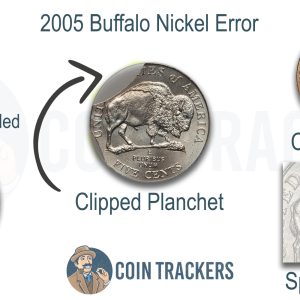
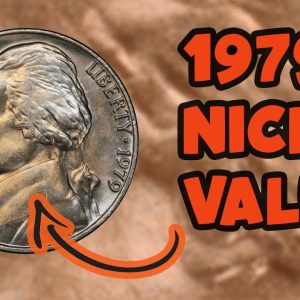
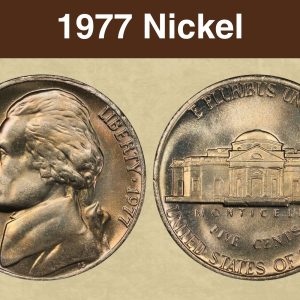
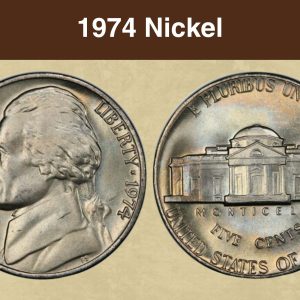
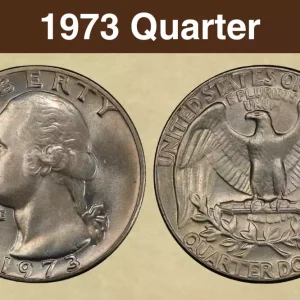
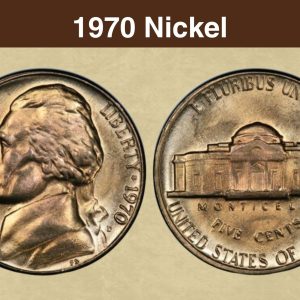
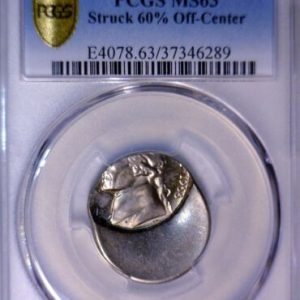
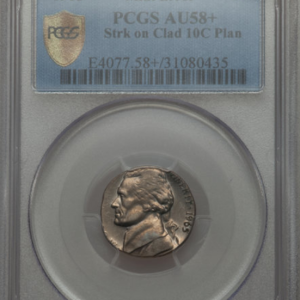
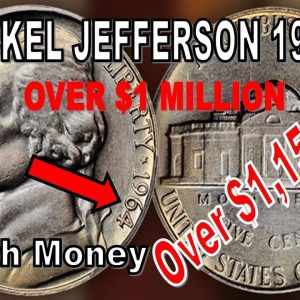
How much is a 1958 D nickel worth?
A 1958-D nickel’s value varies from its face value of 5 cents for circulated coins to several hundred dollars for high-grade examples, with some exceptional \”Full Step\” varieties fetching over $1,000. The condition of the coin is the primary factor; while circulated coins are worth little more than face value, coins with a high mint state grade can be worth $480 or more.
Is there anything special about a 1958 nickel?
For the Philadelphia. Nickel. The auction record is $588 for no full steps.
What are error nickels to look for?
Key nickel errors to look for include doubled dies, where design elements are doubled due to die strikes, off-center strikes, where the coin is struck outside its intended position, and mint mark errors, such as doubled or missing mint marks. Other valuable errors are speared bison on 2005 nickels, the 1943 double die Jefferson nickel, and 1937-D Buffalo nickel three legs.
What is the hardest Jefferson nickel to find?
Its existence was unknown to the numismatic community until a 1993 Stack’s auction brought it to light, making the 1964 SMS one of the rarest and most mysterious Jefferson nickels.